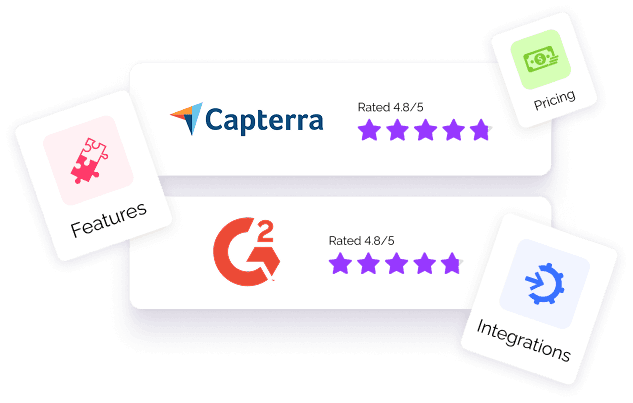What is Inclusion Training? Importance, Types, and Methods


Diversity and inclusion workplace training is becoming increasingly important for organizations in almost every industry.
Diversity training not only has the potential to address prejudices and biases that occur within an organization, but it also has numerous other benefits for your business and employees.
Keep on reading to understand what inclusion training is, why it's important, the different types of inclusion training methods, and the main goals of inclusion training programs.
What is inclusion?
Inclusion refers to the organizational practices and efforts whereby different individuals or groups from diverse backgrounds are socially and culturally welcomed and accommodated.
These differences may be apparent such as ethnicity, race, gender, age, religion, place of origin, and socioeconomic status. Or they can be "hidden", such as training, academic background, or type of personality.
And even though many organizations take pride in their inclusion efforts, the truth is that most marginalized individuals are the ones who actually know how much more work needs to be done.
Inclusion vs diversity
Despite being used interchangeably, these two terms indicate different efforts. Inclusion efforts tend to focus on accommodating and helping different groups feel like they belong, while diversity practices focus on representation.
What is inclusive training?
An inclusion training program is a process through which individual employees, workgroups, or entire organizations become more cognizant of the cultural dynamics that affect individuals and societies.
Inclusiveness training helps participants understand more about historical inequities related to ethnicity and race, how culture can affect the workplace environment, and help organizations become more open to greater participation of marginalized individuals at all levels of the firm.
Why is inclusion training important?
After talking a bit about what inclusion training is, it's time to discuss its importance.
Here are 5 reasons why an inclusion training program at workplaces is crucial for an organization's success:
It improves workplace morale
An organization's morale increases significantly when employees feel included in the workplace. Good morale boosts an employee's enthusiasm, confidence, and loyalty. On the other hand, poor morale often leads to decreased job satisfaction.
Not having good morale may also promote misappropriation of time through procrastination, tardiness, and absenteeism. This feeling of indifference may spread and affect everyone in the organization.
Moreover, job dissatisfaction can also affect an employee's life outside of work. Low morale raises stress and can negatively impact their mental health. As a result, their ability to do their job well may diminish, and the organization may suffer as a whole.
Inclusion and diversity training initiatives go beyond just race relations --- they also involve the implementation of healthy coping mechanisms and policies for workers to get support from their organization. And this in turn sustains a healthy and safe work environment and an inclusive workplace.
It boosts productivity
As mentioned earlier, good morale raises employee productivity. When individuals feel included and respected, they are more likely to contribute more of their energy and time to the organization's mission.
One study suggests that when employees are happy and feel respected, they perform roughly 13% better and at full capacity.
Oftentimes, high ranking officials push employees to meet high expectations but fail to notice the institutional barriers that hinder their --- and the organization's --- success.
But low productivity and poor morale can lead to a downward spiral of discouraged employees and managers, leading to a plethora of challenges for the organization down the line.
A diversity training program gives employees proper channels to voice their concerns and help managers become more aware of what's wrong.
This allows decision-makers to identify challenges that are hindering productivity and address them swiftly.
Rather than unnecessarily punishing workers for not reaching goals and expectations, managers and inclusion advisors can reach out to them and collectively come up with ways to help workers and improve workplace diversity.
It raises employee retention
Diversity training can also boost talent and employee retention. It's no secret that making employees feel accommodated and welcomed helps retain talent.
Workers who feel "left out" or underappreciated are highly likely to be dissatisfied and ultimately quit.
It promotes innovation
Different individuals look at problems differently and have their own ways of solving them. This is why a diverse team offers more creativity and ideas when it comes to solving problems.
If an organization fails to understand the perspectives of diverse groups, it's less likely to find comprehensive solutions to problems.
When colleagues with different skills, experiences, and ideas try to learn, grow, and understand each other, they open up their minds to creative, newer, and more innovative solutions.
It's good for business
Another benefit of diversity and inclusion in organizations is that it can increase market share and result in more business.
Inclusive ideas help organizations become more competitive and reach more demographics and markets.
Diversity training can help organizations expand their customer base by ensuring their decision-makers think inclusively and come from diverse backgrounds.
Here are a few statistics that highlight the importance of D&I in organizations:
- Mckinsey & Co found that organizations in the top quartile for ethnic and racial diversity are up to 35% more likely to have returns above their industry average. Firms in the top quartile for gender diversity are approximately 15% more likely to have returns above their respective industry average.
- BCG (Boston Consulting Group) found that organizations with more diverse management teams and decision-makers enjoy 19% higher financial returns.
- According to Deloitte, 83% of millennials are engaged in companies they believe cultivate an inclusive culture, while only 60% are engaged when they don't believe a company has an inclusive culture.
- Studies have found that inclusive organizations are 1.7x more likely to be innovative and leaders in their market.
Real-life examples of why inclusion and diversity training is so important
The Starbucks PR crisis
In 2018, the world's largest coffeehouse chain ---Starbucks --- found itself trapped in a difficult PR situation when a staff member called the local authorities on 2 black men who were simply waiting for a friend without ordering anything.
Despite doing nothing illegal, the men were arrested and the incident soon went viral.
As a response, many people of color and activists started holding protests inside stores and began highlighting the company's bias against black individuals.
Starbucks was ultimately forced to close all of its U.S stores for an entire day to conduct racial-bias training for its employees.
Unfortunately, research shows that a one-day, temporary diversity training program often fails to generate even near-term results. Even worse, it can ignite bias within an organization's workforce.
The Sephora racial profiling incident
The high-end global beauty chain Sephora found itself in similar circumstances a year after Starbucks when musician SZA claimed she was being racially profiled in an LA store.
After the story started gaining traction in the media and public opinion about the brand started to plummet, Sephora decided to close all US branches for an hour to hold mandatory diversity training.
Similar to the Starbucks response, experts were quick to point out that an hour of training would do little to tackle the issue.
The organization acknowledged the need to do more and stated that this small step was only the beginning of a bigger D&I initiative that would include inclusion training programs for all branch managers and employees.
Inclusion Training Methods
There are numerous ways for an organization to introduce inclusion training without it becoming a boring PowerPoint presentation. There are paid and free diversity training materials available.
A few simple but powerful exercises that can create a diverse workplace include:
"What I want people to know about me"
This activity encourages participants to write down and answer the following questions on a piece of paper:
- What I think of myself
- What others think of me
- What people often misunderstand about me
- What I want others to know about me
It is important to realize that participants in this activity are encouraged to share only as much as they're comfortable sharing.
It's never a good idea to force someone to share personal things if they're not willing to do so.
After everyone writes down the answer to each question, the activity organizers should make rounds and address every participant's answer, and then perform a debriefing session.
The session should ask participants to think about what they've learned about their colleagues, how it felt taking part in the activity, and how they believe they can be more inclusive in their actions moving forward.
"I am, but I'm not"
In this activity, participants are handed two separate pieces of paper. On one paper, they'll write any aspect of their identity that they'd like to share. This can include their race, sexual orientation, or disabilities.
On the remaining piece of paper, they'll write down something that they're not. Participants should be especially encouraged to focus on stereotypes about their identity.
For instance, "I'm Asian, however, I'm terrible at math."
The goal of this activity is to shed light on common stereotypes that participants have faced from childhood and to dispel them.
After everyone is done sharing their responses, a debriefing session should be held where everyone can discuss what they've learnt, how they felt after sharing their personal experiences, and how they feel after listening to their colleagues' responses.
Perspective-taking
For this activity, participants are requested to put themselves into someone else's shoes.
Participants in this activity are paired with colleagues from diverse backgrounds and are invited to write about the potential challenges that their partner might have faced due to their background.
After the group is done writing, each individual should be given a chance to talk about what
they've written. They should also be given an opportunity to ask for insight from their colleagues to give them a better idea about how their diverse backgrounds have affected their lives.
For example, let's say you have accountants --- an Asian gay man called Kim and a white woman named Jennifer. They will be made into a group and would try to put themselves in each other's shoes and think of how their partner's background may have been different from theirs.
Kim may write, "Jennifer might've been discouraged from trying to get an accounting degree because of her gender". And Jennifer might write, "Kim may have been marginalized by his colleagues at work due to his sexuality."
Both individuals will gain more understanding of how life experiences can differ based on an individual's background.
According to this study, this type of inclusion training is one of the most effective training programs out there and has an incredible potential for positive long-term effects. This is why you must ensure it's a part of your inclusion strategy.
Goal-setting
The same study also suggested that goal-setting can lead to positive results within an inclusion training program.
In this inclusion training activity, participants are invited to set attainable and measurable goals within their organization. Keep in mind that these goals should be mainly based on fostering inclusion.
Example goals include opposing sexist jokes, giving misrepresented individuals a platform, and increasing the use of inclusive language at work.
With goals, actionable steps, and a clear path that participants can focus on, diversity training becomes significantly more effective.
Lastly, it's important to never rely too much on only one inclusion training method. That's because every individual learns differently.
By using a wide variety of methods like lectures, speeches, role-playing exercises, videos, and coaching sessions, you're more likely to get your message across.
The Goal of Diversity and Inclusion
The main goal of diversity training is to build a more harmonious work environment for everyone in an organization.
D&I initiatives help achieve this goal by expanding employees' diversity awareness and knowledge of racial, religious, and cultural differences and teaching them how to change their behavior and become more inclusive.
To achieve that main goal, organizations can use staff surveys to figure out what their short and intermediate-term goals should be.
Each company has different areas that require work, and employee feedback is often the best way to identify and prioritize these.
For example, it may be that job advertisements aren't inclusive or use appropriate language, so there are fewer diverse applicants applying for those job postings. This will result in fewer diverse people within the organization, all because an ad wasn't written properly.
There are many more similar areas that might require work. And once again, surveys and employee feedback are the best way to identify them. Whatever specific D&I goals you determine for your company, here are some common overarching goals to keep in mind when training employees:
- Fostering a healthy work environment where employees of diverse backgrounds, perspectives, talents, and experiences can work productively together.
- Expanding the number of underrepresented individuals within the organization.
- Promoting the use of inclusive language.
- Cultivating an environment that promotes and encourages diversity.
- Increasing the resources and time spent in educating employees on diversity and inclusion within the organization.





